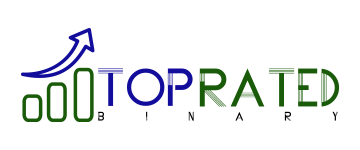When your adventure in Forex trading starts, it becomes a regular activity to check and analyze the market’s prices and possible fluctuations. There are multiple indicators in the currency exchange market. They have been made on the basis of the styles and strategies of trading. Based on the types of analyses, the developers have categorized the indicators into two different categories – technical indicators and fundamental indicators.
Fundamental ones analyze different economic issues of the country, including – GDPs, unemployment rate, interest rate, inflation, economic growth and recession, politics or geopolitics, government instability, and so on. The fundamental tools analyze these issues and help the traders to predict the upcoming market fluctuation.
On the other hand, the technical tools helps us to analyze the graph. After receiving the command, the software uses different (2 most of the times) periods and draw a line to represent the average movement of the prices. Some of the most popular technical tools are simple or exponential moving average, moving average convergence divergence, relative strength index, stochastic, and so on. These tools are widely used by both long-term and short-term traders, and because of close analysis, the market becomes easier for the investors to read and predict.
Here, we will focus on and discuss the four most robust Forex trading indicators for every investor.
4 most robust Forex trading indicators
1. Moving average
It is undoubtedly the most robust indicators for the CFD traders. This extension will make the chart easier for a beginner to read and analyze. For example, when trading with this extension, you have to choose two different timeframes because these timeframes will help you to identify the crossovers or intersections. When a trader chooses a 100-day or 200-day timeframe, this MA extension draws two different lines (one for the 100-day timeframe and another for the 200-day timeframe). They are also called short-term or long-term MA lines. Their intersection point will reveal the information whether you should enter the market or exit it. Make sure you learn the proper use of the MA as it will significantly help you to trade commodities. By learning to trade commodities, you can easily improve your trading skills and become a better trader.
2. Relative strength index (RSI)
RSI is also called an oscillator, which is indeed helpful and very simple. Even beginners can use it to predict any upcoming movements or flows of the market. Primarily, this oscillator is used to determine when the currency pair is oversold or overbought. If the newbie is like the “buy at low and sell at high” type of guy, he should obviously use this oscillator. The evaluation is mainly done based on the scale (0-100). If the value is less than 30, it will indicate that the currency is oversold, and a value of more than 80 indicates that the currency is overbought.
3. Stochastics
Like the RSI, stochastics are also oscillators, and this one will also help you identify whether a currency is overbought or oversold. Because of a unique advantages, this is preferred by professional investors. The two lines – %K and %D will help beginners assess the entry and exit points. The crossover of these two lines signifies the trend possibility, such as, when the %K crosses the %D and goes above it, it is considered an excellent signal to buy the currency. Similarly, calculate the movement and check for another crossover to sell the purchased currency.
4. Moving average convergence and divergence (MACD)
This is a powerful theory but a little complicated than the rest three. A trader has to learn the histogram and the chart at the same time. This indicator is reliable, but due to its difficulty, many newbies don’t want to utilize it. Convergence takes place when the graph shows a similar movement shown by the software. Divergence takes place when the chart shows the opposite direction to that indicated by the software.
These are the four most robust indicators for Forex traders.

